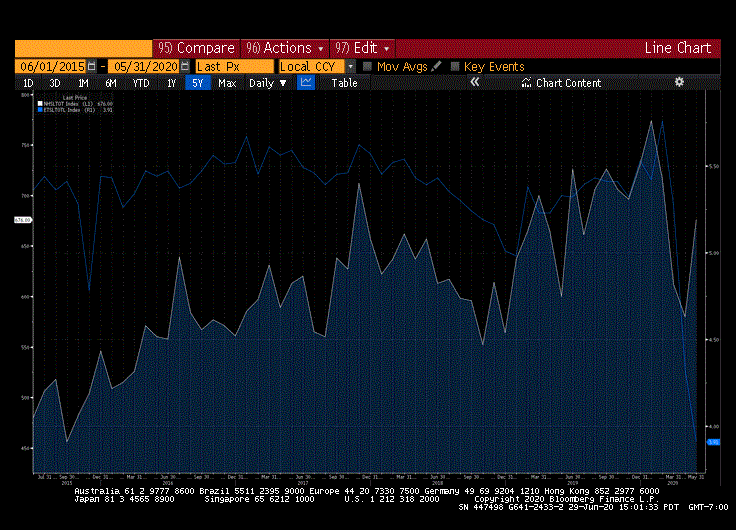It would be an understatement to start by noting that COVID-19 has had a significant impact on the US health care system, economy, and markets in 2020. As the number of COVID-19 cases has increased in the US beginning in late January to over 2.6 million today ![]() , residential real estate activities have also been impacted. In Washington, for example, Governor Jay Inslee approved real estate along with mortgage lending as essential activities
, residential real estate activities have also been impacted. In Washington, for example, Governor Jay Inslee approved real estate along with mortgage lending as essential activities ![]() , although significant restrictions and limitations were placed on these activities. These restrictions included: prohibiting in-person meetings with customers except when necessary for a customer to view a property or sign necessary documents; prohibiting real estate open houses; limiting property viewings, inspections, appraisals, and final walk-throughs to no more than two people on site at any one time; and exercising social distancing at all times.
, although significant restrictions and limitations were placed on these activities. These restrictions included: prohibiting in-person meetings with customers except when necessary for a customer to view a property or sign necessary documents; prohibiting real estate open houses; limiting property viewings, inspections, appraisals, and final walk-throughs to no more than two people on site at any one time; and exercising social distancing at all times.
Given these limitations, a review of existing and new home sales activity, inventory, and prices demonstrates that real estate has been impacted as well, although in an interesting way. When reviewing real estate sales and inventory, analysts consider a less-than six month supply to be a seller’s market, and a more-than six month supply to be a buyer’s market. We appear to be in a seller’s market, with new home sales outperforming existing home sales.
Last week, the National Association of Realtors (NAR) reported that existing home sales decreased 26.6% from a year ago to 3.91 million units in May ![]() (5.33 million in May 2019). Existing home inventory at the end of May totaled 1.55 million units, down 18.8% from one year ago (1.91 million). It was noted that this inventory reflects a 4.8-month supply at the current sales pace, a slight increase when compared to a 4.3 month supply in May 2019. The NAR reported that the median existing-home price for housing increased 2.3% to $284,600 in May, the 99th straight month of year-over-year gains.
(5.33 million in May 2019). Existing home inventory at the end of May totaled 1.55 million units, down 18.8% from one year ago (1.91 million). It was noted that this inventory reflects a 4.8-month supply at the current sales pace, a slight increase when compared to a 4.3 month supply in May 2019. The NAR reported that the median existing-home price for housing increased 2.3% to $284,600 in May, the 99th straight month of year-over-year gains.
In contrast, the National Association of Homebuilders (NAHB) reported last week that May new home sales increased 12.7% to 676 thousand units ![]() , from 600 thousand units a year ago. A new home “sale” is defined as a deposit taken or sales agreement signed, and can occur prior to a building permit being issued. Adjusting for seasonal effects, the NAHB reported that housing inventory was at a 5.6-month supply, down from 6.7 months a year ago. The median sales price of the new homes sold was $317,900, reflecting a price increase of 1.7% from May 2019.
, from 600 thousand units a year ago. A new home “sale” is defined as a deposit taken or sales agreement signed, and can occur prior to a building permit being issued. Adjusting for seasonal effects, the NAHB reported that housing inventory was at a 5.6-month supply, down from 6.7 months a year ago. The median sales price of the new homes sold was $317,900, reflecting a price increase of 1.7% from May 2019.
The graph below from Bloomberg shows existing home sales volume as reported by the National Association of Realtors (blue line) and new home sales volume as reported by the National Association of Homebuilders (white line) by month over the past five years.

The graph shows a recent diverging pace and direction between NAR existing home sales and NAHB new home sales data and suggests that existing home sales have been more severely impacted than new homes in the current COVID-19 environment. This may not be too surprising given the virus-related health risk concerns of potential buyers and sellers, the limitations affecting home sales in some states, and the particular difficulties presented to existing homeowners that are likely occupying the homes they are listing for sale. New homes are typically vacant, and can be at any stage of construction including not yet started, under construction, or completed.
Despite these challenges, the combined data demonstrates we currently appear to be in a seller’s market with generally reduced supply and low mortgage interest rates leading to rising house prices.
Washington Trust Bank believes that the information used in this study was obtained from reliable sources, but we do not guarantee its accuracy. Neither the information nor any opinion expressed constitutes a solicitation for business or a recommendation of the purchase or sale of securities or commodities.
Nick is a Vice President and Portfolio Manager for Washington Trust Bank’s Wealth Management & Advisory Services. He offers our clients the expertise to analyze portfolios and unique assets to ensure that they are suitable for meeting our clients’ goals and needs. Nick partners with our Relationship Managers to provide continual analysis to ensure that these customized portfolio solutions maintain the balance between risk and growth in order to ensure continued success in meeting the clients’ goals.